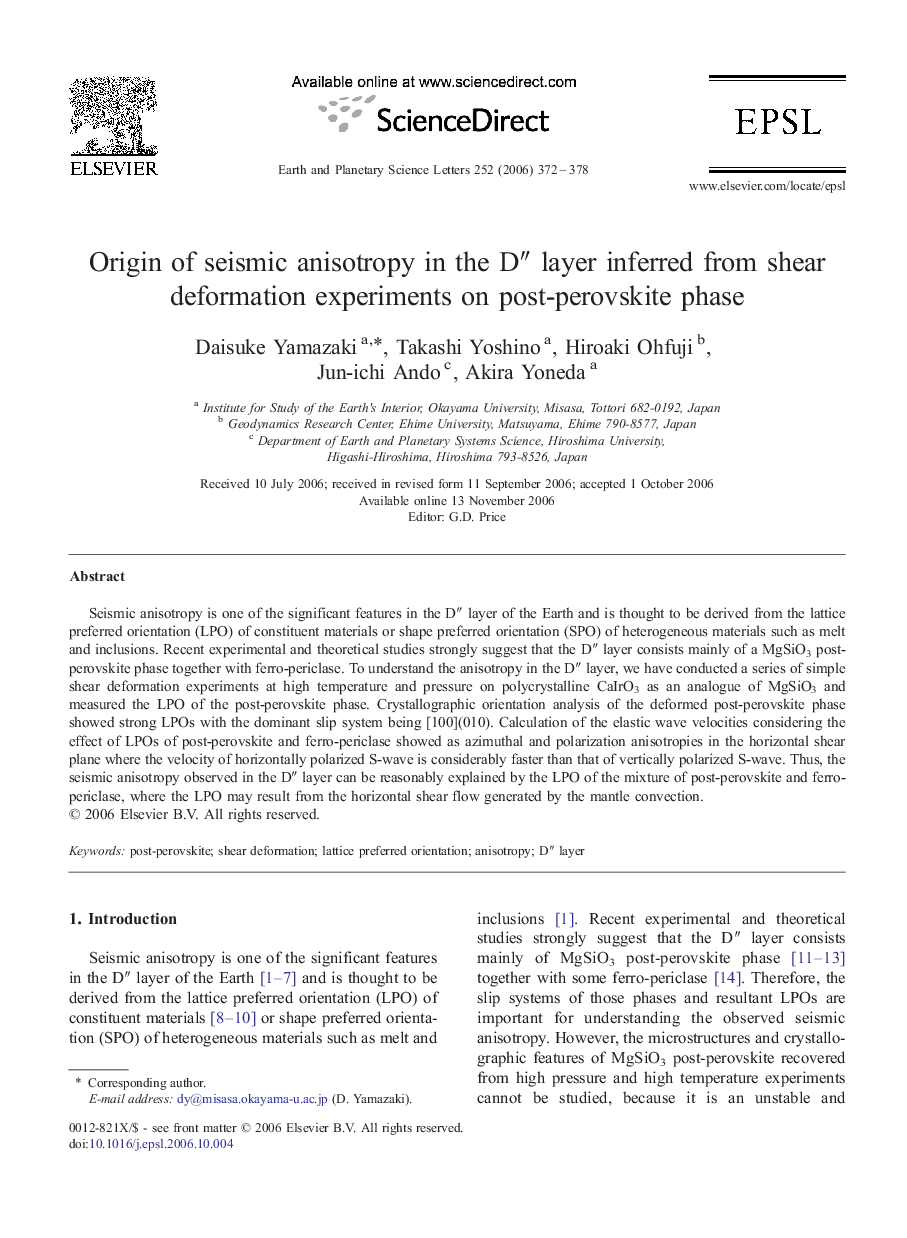| Article ID | Journal | Published Year | Pages | File Type |
|---|---|---|---|---|
| 4680663 | Earth and Planetary Science Letters | 2006 | 7 Pages |
Abstract
Seismic anisotropy is one of the significant features in the Dâ³ layer of the Earth and is thought to be derived from the lattice preferred orientation (LPO) of constituent materials or shape preferred orientation (SPO) of heterogeneous materials such as melt and inclusions. Recent experimental and theoretical studies strongly suggest that the Dâ³ layer consists mainly of a MgSiO3 post-perovskite phase together with ferro-periclase. To understand the anisotropy in the Dâ³ layer, we have conducted a series of simple shear deformation experiments at high temperature and pressure on polycrystalline CaIrO3 as an analogue of MgSiO3 and measured the LPO of the post-perovskite phase. Crystallographic orientation analysis of the deformed post-perovskite phase showed strong LPOs with the dominant slip system being [100](010). Calculation of the elastic wave velocities considering the effect of LPOs of post-perovskite and ferro-periclase showed as azimuthal and polarization anisotropies in the horizontal shear plane where the velocity of horizontally polarized S-wave is considerably faster than that of vertically polarized S-wave. Thus, the seismic anisotropy observed in the Dâ³ layer can be reasonably explained by the LPO of the mixture of post-perovskite and ferro-periclase, where the LPO may result from the horizontal shear flow generated by the mantle convection.
Related Topics
Physical Sciences and Engineering
Earth and Planetary Sciences
Earth and Planetary Sciences (General)
Authors
Daisuke Yamazaki, Takashi Yoshino, Hiroaki Ohfuji, Jun-ichi Ando, Akira Yoneda,
